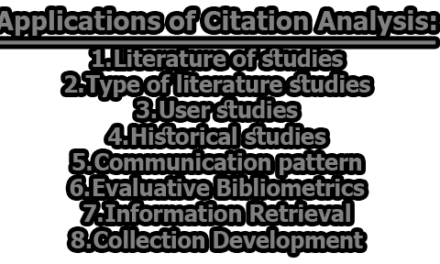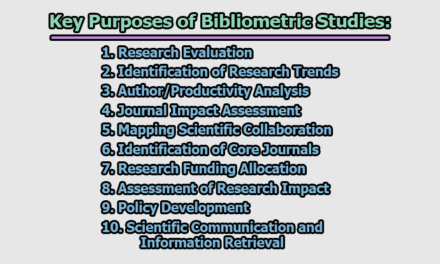Authorship patterns refer to the various ways in which authors collaborate and contribute to research work. It encompasses the roles, responsibilities, and contributions of individual authors as well as the collaborations and relationships between them. Authorship patterns can vary depending on the discipline, type of research, and cultural and institutional norms. Authorship patterns are important because they determine the recognition, credit, and responsibilities given to individual authors, and can have implications for their careers and professional standing. They also impact the credibility and quality of research work, as the contributions of each author can influence the validity and reliability of the findings. In this article, we are going to know about the terminologies used in authorship patterns.
Definitions of Authorship Patterns:
Here are some definitions of Authorship Patterns from different perspectives:
According to the International Committee of Medical Journal Editors (ICMJE), authorship criteria include “substantial contributions to the conception or design of the work; or the acquisition, analysis, or interpretation of data for the work; AND drafting the work or revising it critically for important intellectual content; AND final approval of the version to be published; AND agreement to be accountable for all aspects of the work in ensuring that questions related to the accuracy or integrity of any part of the work are appropriately investigated and resolved.” This definition emphasizes the individual contributions of each author and their accountability for the research work.
From a Sociological Perspective, authorship patterns can be seen as social networks of collaboration and interaction between researchers. This perspective considers the social dynamics of authorship, such as power relations, norms, and cultural factors, and how they shape the authorship patterns within a particular discipline or research community.
In the context of Interdisciplinary Research, authorship patterns can vary depending on the nature of the research and the disciplinary backgrounds of the authors. This perspective recognizes the importance of interdisciplinary collaboration and the challenges of integrating different perspectives and approaches.
From a Quantitative Perspective, authorship patterns can be measured and analyzed using various bibliometric indicators, such as the number of co-authored publications, the collaborative index, and the Salton index. This perspective focuses on the patterns of collaboration and the degree of contribution of individual authors to the research work.
Overall, authorship patterns can be seen as complex and multifaceted phenomena that involve individual and social factors, disciplinary norms, and quantitative measures. Understanding these patterns is essential for ensuring fairness, transparency, and quality in scientific research.
Terminologies Used in Authorship Patterns:
The following terminologies have been used in this section in relation to authorship patterns and attempts have been made to define each term viz.
- Single Authors: A single author is a person who has written a research paper or any other work without any collaboration or contribution from any other person. In other words, they are solely responsible for the content of the work.
- Collaborator: A collaborator is a person who has contributed to the research work of another author. The collaboration can take different forms, such as co-authoring, editing, or providing feedback on the research.
- Authorship credit: Authorship credit refers to the recognition given to authors for their contributions to research work. This recognition can be given in the form of a byline or a mention in the acknowledgments section of the research work.
- Principal author: The principal author is the person who is responsible for the research work and the corresponding manuscript. They usually take the lead in conceptualizing, designing, and conducting the research, as well as writing the manuscript.
- Status of authorship: The status of authorship refers to the level of contribution that an author has made to a research work. Authors who have made significant contributions are usually given more credit and recognition than those who have made minor contributions.
- Collaborative index: The collaborative index is a measure of the extent to which authors collaborate in a particular field or research area. It is calculated by dividing the number of co-authored papers by the total number of papers published in that field or research area.
- Collaborative coefficient: The collaborative coefficient is a measure of the degree of collaboration between authors in a particular field or research area. It is calculated by dividing the number of co-authored papers by the total number of authors in that field or research area.
- Cluster: A cluster is a group of researchers who work together and collaborate on research projects. They often share similar research interests and may collaborate on multiple projects over time.
- Most Prolific author: The most prolific author is the author who has published the most research papers or articles in a particular field or research area. They are often considered to be experts in their field and their work is highly respected and influential.
- Salton Index: The Salton index is a measure of the degree of collaboration between two authors. It is calculated by dividing the number of papers co-authored by two authors by the product of the total number of papers published by each author.
- Equivalence Index: The equivalence index is a measure of the degree of collaboration between two authors. It is calculated by dividing the number of papers co-authored by two authors by the smaller total number of papers published by each author.
In conclusion, authorship patterns are an essential aspect of scientific research that determines the recognition, credit, and responsibilities given to individual authors, as well as the credibility and quality of research work. The Terminology Used in the Authorship Patterns includes various terms that describe the different aspects of authorship patterns, such as the level of collaboration, the status of authorship, the role of the principal author, the degree of contribution of individual authors, and the measurement of collaboration between authors. These terms include single authors, collaborators, authorship credit, principal author, the status of authorship, collaborative index, collaborative coefficient, cluster, most prolific author, Salton index, and equivalence index. Understanding these terminologies is essential for ensuring fairness, transparency, and quality in scientific research, as well as for recognizing the contributions of individual authors and their collaboration.

Assistant Teacher at Zinzira Pir Mohammad Pilot School and College










